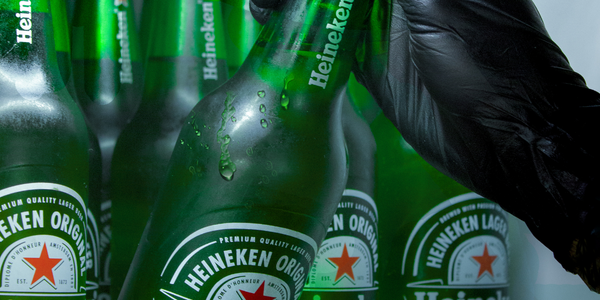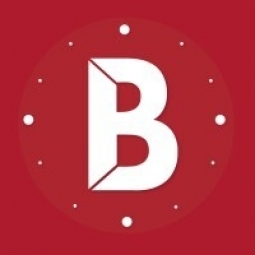Applicable Industries
- Food & Beverage
- Retail
Applicable Functions
- Human Resources
- Sales & Marketing
Use Cases
- Inventory Management
- Personnel Tracking & Monitoring
Services
- System Integration
About The Customer
Lucia Wine Bar is a renowned hospitality establishment with a strong presence in York, Harrogate, and Beverly. Known for its delicious flavours and beautiful interiors, the bar offers a temporary immersion into the Italian lifestyle. Whether customers are stopping by for nibbles and an aperitif or wish to fully indulge in classic Italian cuisine, Lucia Wine Bar has a range of menus featuring show-stopping dishes and world-class ingredients. The bar has over 200 employees across its four locations and has been a user of Bizimply workforce management software since 2020.
The Challenge
Lucia Wine Bar, a popular hospitality establishment with locations in York, Harrogate, and Beverly, was facing significant challenges in managing its workforce. The Operations Manager, Darioush Shahidi, was particularly concerned about the inefficiencies in the payroll process and the inaccuracies in recording staff hours. The absence of a formal clock-in process meant that staff had to manually write down their working hours, which were then manually entered into the system. This process was not only time-consuming but also prone to errors, leading to discrepancies between the actual and scheduled labour hours. These errors were proving costly for the business.
The Solution
To address these challenges, Darioush began researching workforce management software that could streamline the day-to-day operations of the business. He was looking for a solution that would provide better visibility over costs, improve HR management, streamline the management of staff holidays, and offer a secure, centralized location for storing employee documents. The solution came in the form of Bizimply, a cloud-based workforce management software. With Bizimply, Lucia Wine Bar was able to streamline its payroll process and gain greater control over its labour and sales data, leading to better business decisions. The software also allowed staff to book time off using the MyZimply App, eliminating errors in scheduling staff who had booked off or submitted unavailability requests. Furthermore, Bizimply provided a secure, cloud-based system for storing all employee documents, ensuring compliance and up-to-dateness.
Operational Impact
Quantitative Benefit

Case Study missing?
Start adding your own!
Register with your work email and create a new case study profile for your business.
Related Case Studies.

Case Study
The Kellogg Company
Kellogg keeps a close eye on its trade spend, analyzing large volumes of data and running complex simulations to predict which promotional activities will be the most effective. Kellogg needed to decrease the trade spend but its traditional relational database on premises could not keep up with the pace of demand.

Case Study
HEINEKEN Uses the Cloud to Reach 10.5 Million Consumers
For 2012 campaign, the Bond promotion, it planned to launch the campaign at the same time everywhere on the planet. That created unprecedented challenges for HEINEKEN—nowhere more so than in its technology operation. The primary digital content for the campaign was a 100-megabyte movie that had to play flawlessly for millions of viewers worldwide. After all, Bond never fails. No one was going to tolerate a technology failure that might bruise his brand.Previously, HEINEKEN had supported digital media at its outsourced datacenter. But that datacenter lacked the computing resources HEINEKEN needed, and building them—especially to support peak traffic that would total millions of simultaneous hits—would have been both time-consuming and expensive. Nor would it have provided the geographic reach that HEINEKEN needed to minimize latency worldwide.

Case Study
Improving Production Line Efficiency with Ethernet Micro RTU Controller
Moxa was asked to provide a connectivity solution for one of the world's leading cosmetics companies. This multinational corporation, with retail presence in 130 countries, 23 global braches, and over 66,000 employees, sought to improve the efficiency of their production process by migrating from manual monitoring to an automatic productivity monitoring system. The production line was being monitored by ABB Real-TPI, a factory information system that offers data collection and analysis to improve plant efficiency. Due to software limitations, the customer needed an OPC server and a corresponding I/O solution to collect data from additional sensor devices for the Real-TPI system. The goal is to enable the factory information system to more thoroughly collect data from every corner of the production line. This will improve its ability to measure Overall Equipment Effectiveness (OEE) and translate into increased production efficiencies. System Requirements • Instant status updates while still consuming minimal bandwidth to relieve strain on limited factory networks • Interoperable with ABB Real-TPI • Small form factor appropriate for deployment where space is scarce • Remote software management and configuration to simplify operations

Case Study
Energy Management System at Sugar Industry
The company wanted to use the information from the system to claim under the renewable energy certificate scheme. The benefit to the company under the renewable energy certificates is Rs 75 million a year. To enable the above, an end-to-end solution for load monitoring, consumption monitoring, online data monitoring, automatic meter data acquisition which can be exported to SAP and other applications is required.

Case Study
Coca Cola Swaziland Conco Case Study
Coco Cola Swaziland, South Africa would like to find a solution that would enable the following results: - Reduce energy consumption by 20% in one year. - Formulate a series of strategic initiatives that would enlist the commitment of corporate management and create employee awareness while helping meet departmental targets and investing in tools that assist with energy management. - Formulate a series of tactical initiatives that would optimize energy usage on the shop floor. These would include charging forklifts and running cold rooms only during off-peak periods, running the dust extractors only during working hours and basing lights and air-conditioning on someone’s presence. - Increase visibility into the factory and other processes. - Enable limited, non-intrusive control functions for certain processes.








